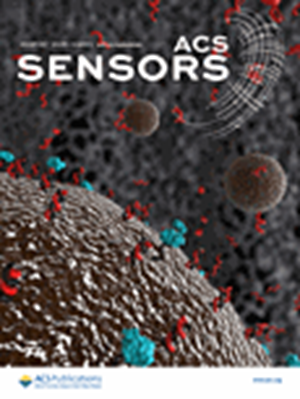Novel Flexible Organic Photoplethysmogram Sensor for Continuous Cardiovascular Monitoring.
IF 8.2
1区 化学
Q1 CHEMISTRY, ANALYTICAL
引用次数: 0
Abstract
A flexible organic photodetector (OPD) has been developed for a flexible organic photoplethysmography sensor (FOPS) designed to monitor vital cardiovascular parameters such as pulse rate, respiratory rate, blood pressure, and pulse rate variability. This device is fabricated on a flexible substrate, utilizing a blend of PCDTBT and PC71BM as the active layer. The FOPS demonstrates excellent absorption properties across the visible spectrum, which is essential for capturing high-quality arterial pulse signals, known as photoplethysmogram (PPG). Optoelectronic characterization revealed a high response time and an impressive on/off current ratio, enabling the accurate detection of microfeatures within the PPG signal. We successfully utilized the device to monitor PPG signals in both reflection and transmission modes, employing green (530 nm) and red (630 nm) light sources, respectively. The recorded PPG signals were further analyzed to measure cardiovascular parameters. The device also demonstrates the ability to measure blood pressure using two techniques: a cuff-based method in conjunction with the oscillometric waveform (OMW) and a cuff-less technique utilizing an artificial neural network approach. These results highlight the FOPS's potential for integration into wearable medical technology, offering continuous, real-time cardiovascular monitoring in a user-friendly and noninvasive manner.用于心血管连续监测的新型柔性有机光电容积图传感器。
一种柔性有机光电探测器(OPD)已被开发用于柔性有机光电容积脉搏波传感器(FOPS),用于监测重要的心血管参数,如脉搏率、呼吸率、血压和脉搏变异性。该器件是在柔性衬底上制造的,利用pcdbt和PC71BM的混合物作为有源层。FOPS在可见光谱中表现出优异的吸收特性,这对于捕获高质量的动脉脉冲信号(称为光体积脉搏图(PPG))至关重要。光电特性显示出高响应时间和令人印象深刻的开/关电流比,能够准确检测PPG信号中的微特征。我们成功地利用该装置在反射和透射模式下监测PPG信号,分别采用绿色(530 nm)和红色(630 nm)光源。进一步分析记录的PPG信号以测量心血管参数。该设备还展示了使用两种技术测量血压的能力:一种是结合振荡波形(OMW)的基于袖带的方法,另一种是利用人工神经网络方法的无袖带技术。这些结果突出了FOPS集成到可穿戴医疗技术中的潜力,以用户友好和无创的方式提供连续、实时的心血管监测。
本文章由计算机程序翻译,如有差异,请以英文原文为准。
求助全文
约1分钟内获得全文
求助全文
来源期刊

ACS Sensors
Chemical Engineering-Bioengineering
CiteScore
14.50
自引率
3.40%
发文量
372
期刊介绍:
ACS Sensors is a peer-reviewed research journal that focuses on the dissemination of new and original knowledge in the field of sensor science, particularly those that selectively sense chemical or biological species or processes. The journal covers a broad range of topics, including but not limited to biosensors, chemical sensors, gas sensors, intracellular sensors, single molecule sensors, cell chips, and microfluidic devices. It aims to publish articles that address conceptual advances in sensing technology applicable to various types of analytes or application papers that report on the use of existing sensing concepts in new ways or for new analytes.
 求助内容:
求助内容: 应助结果提醒方式:
应助结果提醒方式:


